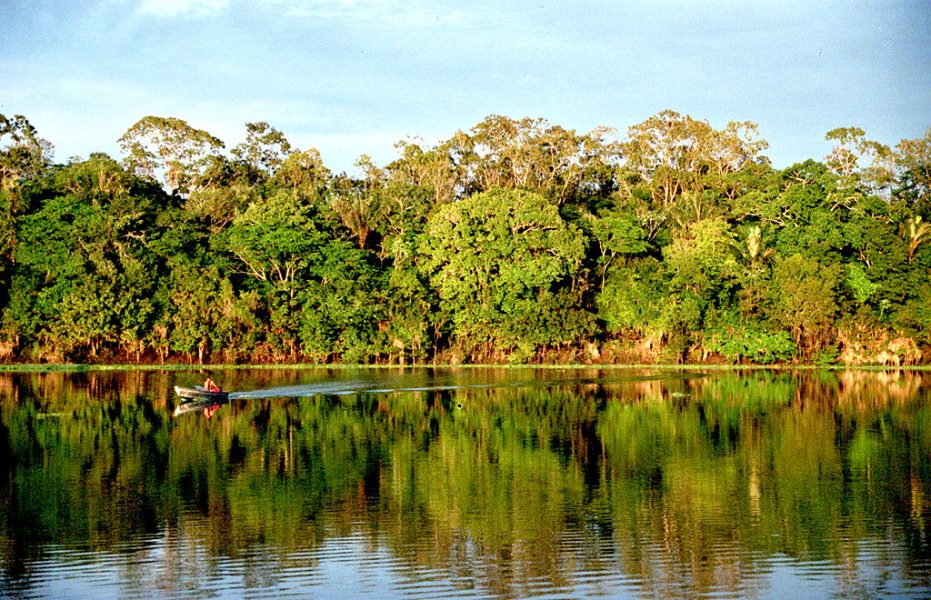
30x30 pact at COP15: What's this target, and is it achievable?
Many have hailed the 30x30 target set at the United Nations Biodiversity Conference, or COP15, which just ended in Canada’s Montreal. Why is it significant, and is it enough? Here is an explainer

The two-week United Nations Biodiversity Conference, or COP15, ended in Canada’s Montreal on Monday with the commitment to protect 30% of land and 30% of water on Earth by 2030. This agreement is being referred to as “30×30.” So, what is it all about and how achievable is the target? Here is an explainer.
Significance of the 30×30 target
At the UN climate summit, COP27, in Egypt in November, world leaders agreed to cap the global warming target at 1.5 degrees Celsius—beyond which the world would experience devastating damage, according to scientists and economists.
But how to stop warming? According to the Intergovernmental Panel on Climate Change (IPCC), the destruction of vital ecosystems, including forests and waterbodies, must stop by 2030 if we must meet the 1.5-degrees Celsius target.
Besides, the delegates also agreed to try to restore 30% of degraded land and waterbodies, up from the previous aim of 20%.
Is preserving 30% enough?
The Campaign for Nature, which has been advocating the 30×30 goal, is looking at the agreement as a milestone. However, its director Brian O’Donnell was quoted by The Guardian as describing the goal as a “floor, not a ceiling.”
Also read: India-backed ‘loss and damage fund’ gets the green signal at COP 27
According to O’Donnell, the world should push towards preserving 50% of the world’s land and water. It is in line with Harvard biologist EO Wilson’s vision of protecting half the planet to ensure the long-term survival of humanity.
At present, only 17% of land and 10% of marine areas are protected.
Where should conservation efforts focus?
A November 2021 study mapped the ecosystems that should be conserved to meet climate targets such as the 1.5-degree Celsius goal. These included the vast forests and wetlands of Russia, China, and the US and the tropical rainforests of the Amazon, Congo Basin, and Indonesia. According to the study report, these areas hold 139 billion metric tonnes of “irrecoverable” carbon. According to researchers, these are the areas where the 30×30 efforts should be concentrated.
At COP27 in November, the Democratic Republic of the Congo, Brazil, and Indonesia announced the Big Three rainforest coalition to work towards their conservation. Luiz Inácio Lula da Silva, who will take charge of Brazil on January 1, 2023, has promised to convene a pan-Amazonian meeting to focus on the region’s conservation.
At the last biodiversity summit in 2018, IPLCs had proposed a protected area as large as Mexico to cover the world’s largest rainforests to be created by 2025—the “80 by 25” goal.
Is the target global or country-wise?
That is a point of contention. The argument is that if all countries cannot fulfil the 30×30 target within their own boundaries, richer countries with less biodiversity left should pay poorer, more biodiverse countries to preserve their nature. That’s because those natural resources are global assets.
India, along with Brazil and South Africa, argued at COP15 that the 30×30 target would require significant financial and technical support. Finally, it was agreed upon that an annual sum of $200 billion, raised from public and private sources, would be channelled to conservation initiatives. Of that, rich countries would contribute at least $20 billion annually by 2025, and at least $30 billion a year by 2030.
However, IPLCs argued from experience that even if the money comes in, it would hardly reach the people that matter. The Democratic Republic of Congo raised an objection to the package, but the deal was declared approved anyway.
Is everybody happy with the target?
Not really. A major point of contention, as always, is the argument of poor countries that if the rich industrial countries destroyed their own natural resources to achieve their industrial goals, how they can ask the poor countries to conserve theirs at the cost of their growth.
More importantly, many argue that area-based conservation would violate human rights—more specifically, of the Indigenous Peoples and Local Communities (IPLCs). These communities were guardians of natural spaces for thousands of years before being removed from so-called protected areas they knew as their only homes. Since the 19th century, millions of IPLCs have been displaced from their homelands on the pretext of conservation.
Watch: COP27: Decoding where the world and India stand in acting on climate change
However, COP15 has put the focus on “rights-based conservation,” that is, IPLCs are being seen as protectors of land. IPLCs comprise around 5% of the world population but protect 80% of its remaining biodiversity. Yet, indigenous peoples are wary about the 30×30 target and have sought to be treated with respect and their rights to be prioritised.
Other facets of the 30×30 deal
In other measures to achieve the target, countries promised to identify subsidies that lead to biodiversity depletion and eliminate them by 2025. Another target was to reduce pesticide use by up to two-thirds, but ultimately, the countries settled on reducing those threats by “at least half.”
The negative impacts of pollution are supposed to be reduced to levels that are not harmful to nature, but the draft mentions no quantifiable target.
Also, to ensure that all nations meet the target, national action plans will apparently be set and reviewed. However, no deadline was set for countries to submit these plans.

